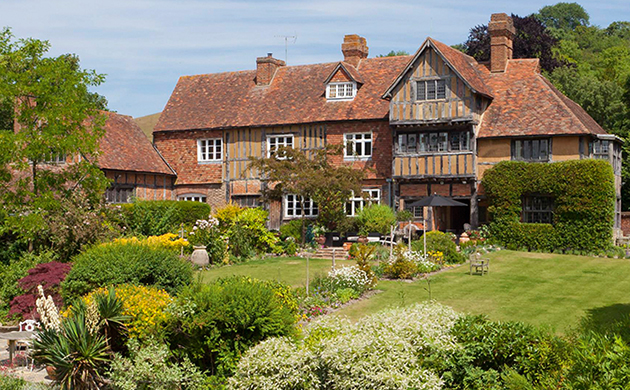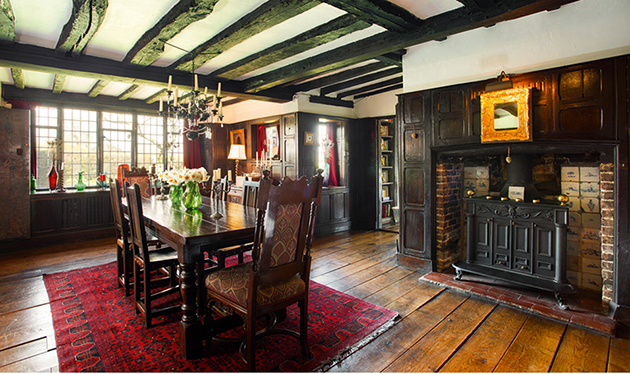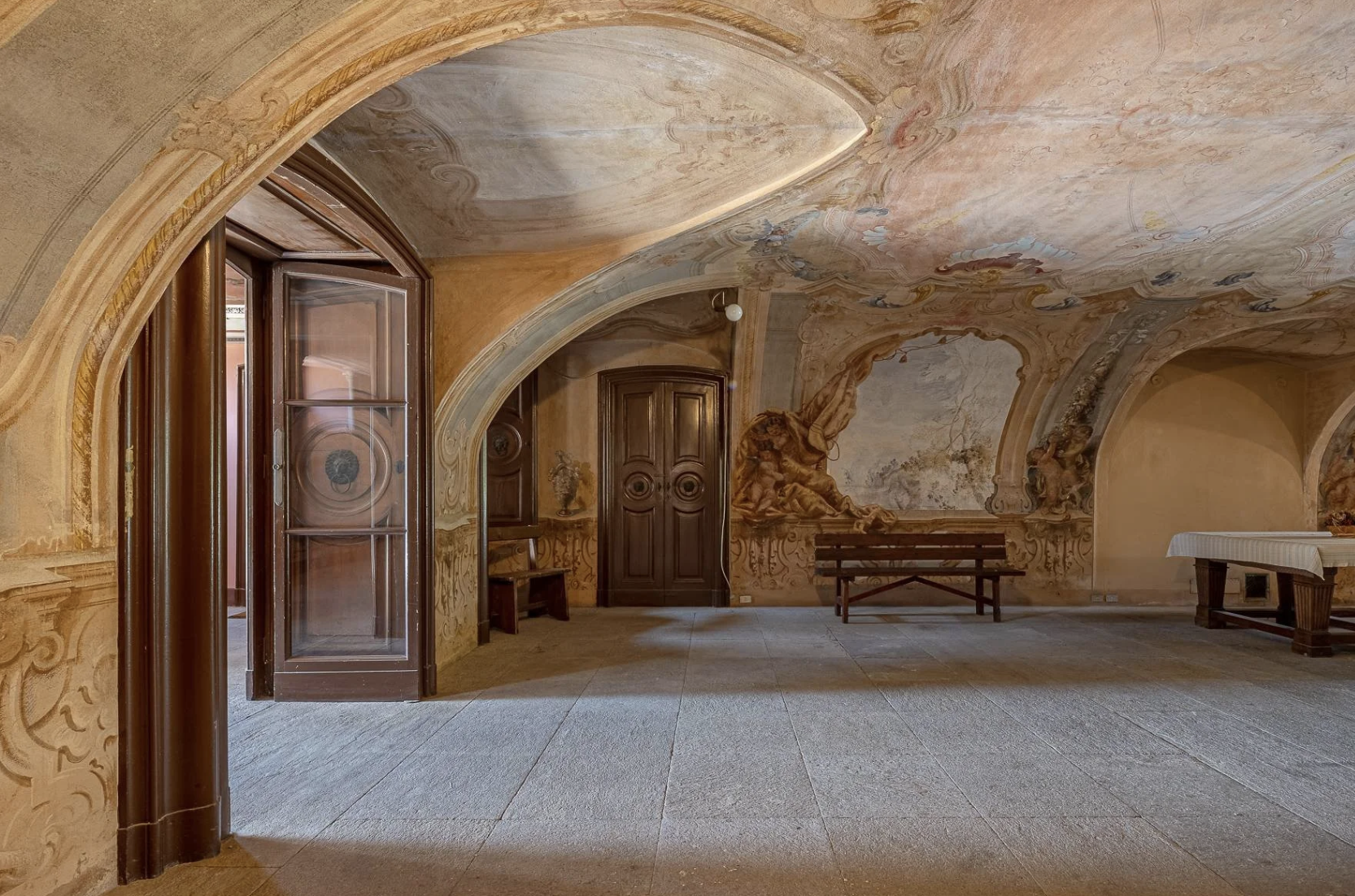Three listed country houses for sale
These three grand old houses have been looked-after with such love by successive owners; are you ready to take on one of these beautiful pieces of history ?


These three incredibly special country houses on the market are all listed for their architectural interest..
All English country houses are unique in their own way; some, however, are more special than others. One that springs to mind is the spectacular, 16th-century former rectory, Chailey Moat at Chailey Green, near Lewes, East Sussex, which comes to the open market for the first time in almost 20 years—and only the second time in its history— at a guide price of ‘excess £5 million’ through Savills’ country department (020–7409 8877).

Heavily protected by some 44 acres of exquisite gardens, grounds, paddocks and woodland on the edge of the village, according to parish records, the house dates from at least 1540, although much of the original timber-framed medieval building is hidden by later alterations.
Historically known as The Parsonage (the name Chailey Moat was adopted in the 1960s, presumably to avoid confusion with the current rectory, which is located on the village green), from the early 18th century, it claimed the rare distinction of being the only moated rectory in England, an anomaly noted by Sussex historian T. W. Horsfield. He wrote in 1835: ‘The parsonage house is a very ancient building which has recently undergone considerable repairs. It is surrounded by a moat—a singular appendage to a mansion of peace.’
The most significant alterations to the house were carried out by the Rev Richard Porter, rector from 1713 to 1753. He added the classic, early-18th-century front, consisting, according to its Grade II listing, of ‘a centre with two projecting wings with hipped roofs… The centre first-floor window is Venetian’. Tradition has it that he also dug, single-handed, the enormous rectangular moat surrounding the house that is fed by a stream at the rear, although most serious historians maintain that the moat is much earlier and may be all that remains of a medieval fortified farm.
Whoever did the digging did a great job, because, from that day to this, the house has never flooded—as can be seen from the little-altered state of the interior, in which Tudor, Carolean and Georgian elements sit happily together. The Elizabethan panelling in the main reception rooms has been carefully preserved, although that in the dining room is described in the Victoria County History as ‘being painted green in the time of George IV and not since redecorated’. Traces of that green paint were still visible when I visited in February 1997.
Other interesting features include part of a Charles I bedstead inserted above the fireplace in the charming panelled sitting room, which has a 1635 fireback bearing the royal arms. The drawing room fireplace dates from about 1540 and has a late- 17th-century over-mantel. The hall has typically Georgian six-panelled doors and an 18th-century staircase. As currently arranged, the main house has three principal reception rooms, a kitchen/breakfast room, master and guest suites, 5/6 further bedrooms, two bath/shower rooms and a roof terrace.
Exquisite houses, the beauty of Nature, and how to get the most from your life, straight to your inbox.
Additional accommodation is provided by an enchanting one-bedroom cottage and a magnificent 17th century tithe barn, which has been converted by the owners to a four-bedroom cottage with a games room. Well defended from outside incursion behind its extensive gardens, grounds and signature white wooden footbridges, Chailey Moat remains that elusive entity, a ‘mansion of peace’. The owners, whose international business interests no longer allow them to fully enjoy their Sussex retreat, will leave behind a family home much improved but little altered, opening the way for a new family to put their own stamp upon this rare survivor of a more warlike age.

The trials and tribulations of moving house are onerous enough, but surely nothing compares to the complexity of moving an entire country house from Sussex to Kent, as happened in the case of Thornham Friars at Thurnham, Kent, an unspoilt hamlet on the ancient Pilgrims Way, in the shadow of the North Downs near Bearsted.
Imposing, Grade II listed Thornham Friars was created by the clever juxtaposition of a substantial, 17th-century, timber-framed Sussex house and barn alongside a modest Kentish house that already existed on the site. Even more moving is the plight of the current vendors—both established figures in the international film industry—who bought Thornham Friars in 2014 and embarked on an all-out renovation of the house and gardens. However, no sooner had they signed off on their restoration project than Hollywood beckoned and they now need to up sticks and move to California. Consequently, their immaculate Kent country home, set in two acres of glorious gardens, is for sale through the Canterbury office of Strutt & Parker (01227 473720) at a guide price of £1.75m.
The stable block and some 10 acres of parkland are available separately. Created over the past 50 years by the previous owner and considerably enhanced by the vendors, the gardens provide a magical setting for the handsome, seven-bedroom house, whose 6,180sq ft of living space includes five splendid, ground-floor reception rooms, plus a state-of-the-art kitchen/ breakfast/family room in the old, western end of the house. The views across the Weald to Leeds Castle, in the distance are, quite simply, to die for.

Few Victorian or Arts-and-Crafts architects can have relocated more frequently than the prolific designer and painter Mackay Hugh Baillie Scott, who appears to have lived in a state of perpetual motion. Born at St Peters, near Ramsgate, Kent, in 1865, he established practices in the Isle of Man, London and Bedford, where he combined two cottages on the outskirts of the town to create Fenlake Manor, which burned to the ground in 1911.
There followed a series of temporary moves to London, Haslemere and elsewhere, until, in 1914, the practice closed for the duration of the First World War and the Baillie Scott family returned to Bedford. Shortly afterwards, Baillie Scott stepped in to rescue a dilapidated 15th-century Kentish farmhouse in the village of Great Chart, 2.5 miles from Ashford, which was about to be demolished. He bought, restored and extended the house, using Arts-and- Crafts techniques to enhance the medieval charm of the original Tudor wings.
He renamed it Baillie Hall and lived there until the end of the war, when he returned to London to revive his practice.

For selling agent Simon Backhouse, who quotes a guide price of £1.65m, Baillie Hall, listed Grade II*, is, without doubt, ‘one of the best timber-framed houses in East Kent’, having been again fully restored by its current owners. Set in just under an acre of informally landscaped gardens, the house offers some 5,500sq ft of accommodation on three floors, including four fine reception rooms, an intimate snug, a kitchen/breakfast room, five bedrooms and three bathrooms.
-
 Dream of revolution inside the 18th-century villa once occupied occupied by Napoleon's French troops
Dream of revolution inside the 18th-century villa once occupied occupied by Napoleon's French troopsAn apartment inside historic Villa Gnecchi Ruscone is on the market and it comes with a grand ballroom rumoured to have been frequented by Napoleon.
By Lotte Brundle Published
-
 Get ready to get spooky in the Halloween edition of the Country Life Quiz of the Day, October 31, 2025
Get ready to get spooky in the Halloween edition of the Country Life Quiz of the Day, October 31, 2025Ghosts, ghouls and ghastly questions lurk in today's quivering quiz.
By Country Life Published

